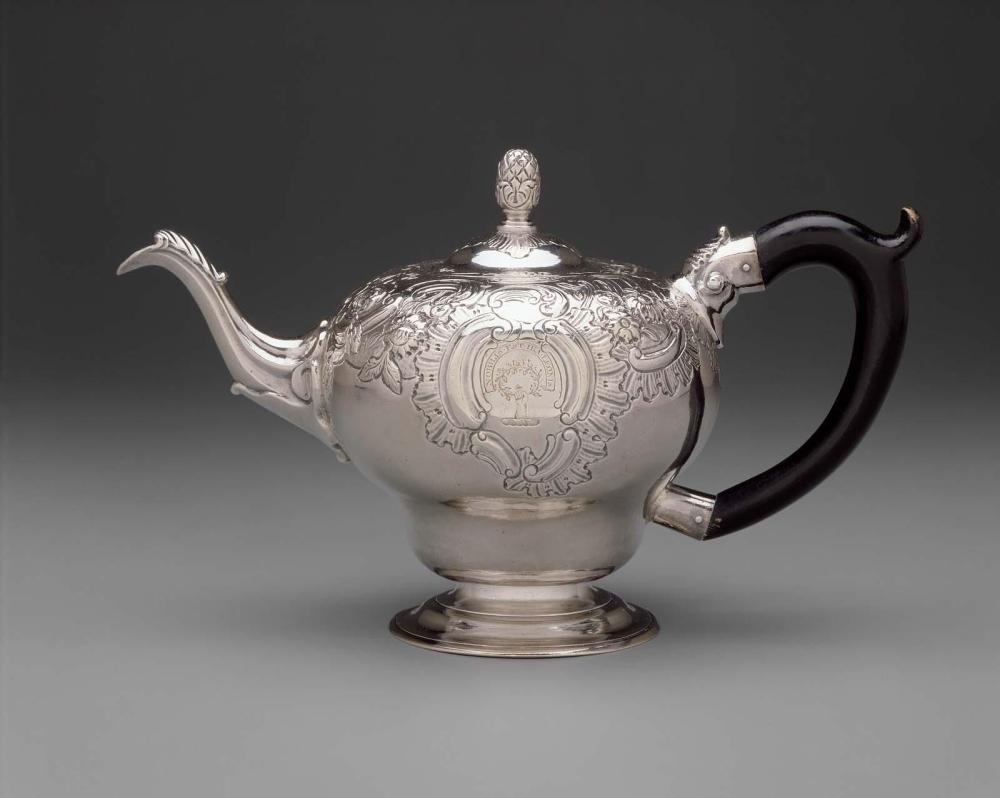Advanced Search
Teapot
Paul Revere, Jr. (American, 1734–1818)
1760–65
Object Place: Boston, Massachusetts
Medium/Technique
Silver
Dimensions
Overall: 14.9cm (5 7/8in.)
Credit Line
Pauline Revere Thayer Collection
Accession Number35.1775
CollectionsAmericas
ClassificationsSilver hollowware
Long before he earned fame as a zealous patriot, Paul Revere Jr. was well known among his contemporaries as a superb silversmith and engraver. He learned his trade from his father, Paul Revere Sr., who had emigrated from France as a young man and apprenticed with noted silversmith John Coney. The younger Revere inherited the shop after his father's death in 1754, working under his mother's name until he came of age a year later. The craftsman's early work shows his quick adoption and mastery of the Rococo style, both in engraving and three-dimensional works in silver.
This extraordinary teapot is one of the finest surviving Rococo teapots from Boston. The sophisticated double-bellied shape is embellished with raised, chased decoration, as opposed to the more common flat, engraved method. The designs, which were punched out from the interior of the piece, decorate the shoulder of the teapot and form the central cartouche. The iconography includes common Rococo motifs such as C-scrolls, raffles (ruffle-like decoration), and a variety of flowers arranged in an energetic and asymmetrical fashion, as well as a more exotic bird and chinoiserie pavilion. These unusual motifs indicate Revere's advanced knowledge of, and willingness to experiment with, the Rococo style.
This text was adapted from Ward, et al., MFA Highlights: American Decorative Arts & Sculpture (Boston, 2006) available at www.mfashop.com/mfa-publications.html.
This extraordinary teapot is one of the finest surviving Rococo teapots from Boston. The sophisticated double-bellied shape is embellished with raised, chased decoration, as opposed to the more common flat, engraved method. The designs, which were punched out from the interior of the piece, decorate the shoulder of the teapot and form the central cartouche. The iconography includes common Rococo motifs such as C-scrolls, raffles (ruffle-like decoration), and a variety of flowers arranged in an energetic and asymmetrical fashion, as well as a more exotic bird and chinoiserie pavilion. These unusual motifs indicate Revere's advanced knowledge of, and willingness to experiment with, the Rococo style.
This text was adapted from Ward, et al., MFA Highlights: American Decorative Arts & Sculpture (Boston, 2006) available at www.mfashop.com/mfa-publications.html.
Catalogue Raisonné
Buhler, 1972, No. 346
InscriptionsEngraved with Ross crest; motto: "NOBILIS.EST.IRA.LEONIS"
ProvenanceJohn Ross of Philadelphia, m. Clementina Plumstead, daughter of William and Mary (McCall) Plumstead; her sister Miss Plumstead; returned to McCall family; Phoebe (Hoffman) Bickerton, whose mother was a McCall, from whom the piece was bought; given to the Museum in 1935 by the collector Pauline Revere Thayer.



